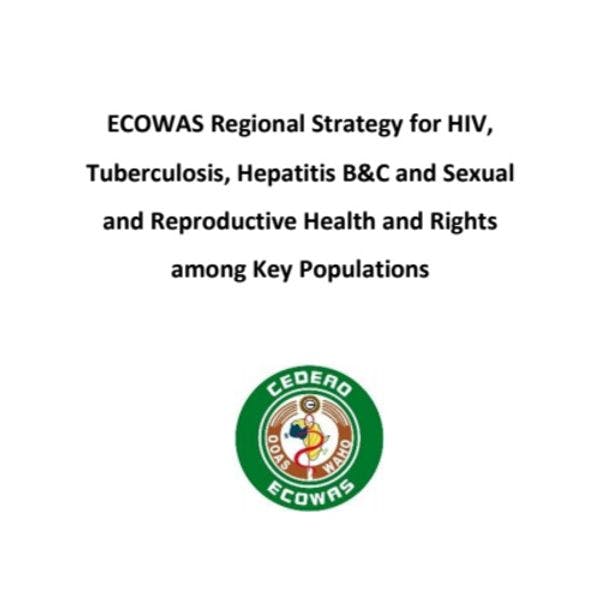ECOWAS regional strategy for HIV, tuberculosis, hepatitis B & C and sexual and reproductive health and rights among key populations
Preface
The HIV pandemic contributes to significant ill-health and deaths as well as impedes socioeconomic development in the ECOWAS region. While the prevalence of HIV in the general population is relatively low at 0.3%-3.5%, it is up to 34.4% in some key populations. As the number of key populations increase in the region, it is likely that their contribution to new HIV infections will continue to be important if appropriate measures are not instituted. The criminalization of the sexual practices of key population groups, pervasive stigma and discrimination hinders their access to HIV programmes in the ECOWAS region. This, in part, contributes to the paucity of relevant information on key populations needed for planning service delivery.
Fortunately, with the signing of the Dakar Declaration in April 2015 at the WAHO-led regional meeting of health ministers, HIV/AIDS national leaders, security agencies, there is now increased momentum in the role of key populations in the HIV response. Besides HIV, key populations have other health problems. Tuberculosis is the leading killer in people living with HIV. Imprisoned people and people who inject drugs in the ECOWAS region have a higher risk of acquiring Hepatitis C virus than the general population.
It was to address such challenges and to promote a harmonized response that stakeholders participating in a review meeting on the implementation of Dakar Declaration in Lomé in November 2018, agreed to work with WAHO to develop an integrated regional ECOWAS strategy on HIV/TB, hepatitis B and C and SRHR programming for key populations.
The current strategy follows extensive desktop review as well as national and regional consultations. The process was coordinated by a technical working group involving the Africa Key Populations Experts Group (AKPEG), Enda Santé, WHO, UNAIDS, UNDP and representatives of Member States. I would like to thank the Consultant who put developed the plan starting in June 2019. I thank all stakeholders including Development Partners, UN agencies, civil society and regional organizations of key populations and young key populations, who provided strategic guidance and valuable inputs. In particular, I thank all Member States represented by the Ministries of Health HIV/AIDS Technical Leads and National AIDS Commissions who reviewed and enriched the document during different consultative forums. I acknowledge the financial and technical assistance from UNAIDS, UNDP, USAID, and WHO for the development of this strategy.
I expect the strategy to be owned by all our Member States and Partners. It will guide our national and regional integrated response to the sexual and reproductive health challenges of key populations. I look forward to your support in monitoring its application in the region.
Professor Stanley OKOLO,
Director General, WAHO
